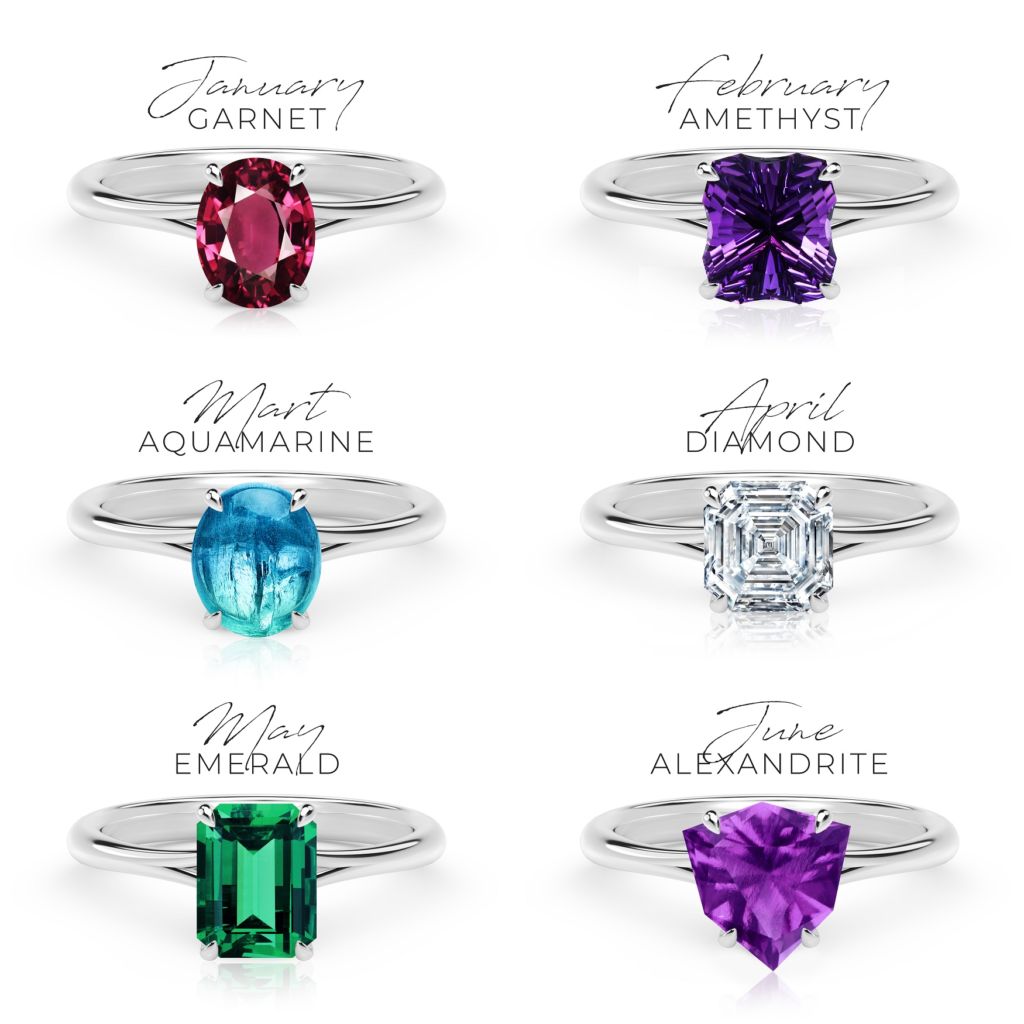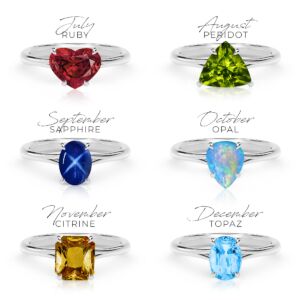Birthstone jewelry has remained perennially popular, even as recommendations for which gems go with certain months keep changing! You have undoubtedly encountered many traditional birthstone lists in your reading. Here, we’re going to do something different. We are going to provide the history of the traditional birthstones, the modern alternatives, and their meanings to give you a wider appreciation for this charming and time-honored custom – you might even be able to make it a trivia quiz!
Who decided the list of Birthstones?

The use of gemstones in astrology is nothing new, dating back 5000 years to ancient India. Some believe that birthstones were referenced in the Old Testament of the Bible and symbolize the twelve tribes of Israel. One of the most endearing legends implies that in 1582 the Gregorian calendar contained a poem that described each month as having a matching gemstone. Although this poem has not been verified as authentic to the Gregorian calendar, it was published in 1870 by Tiffany & Company anyway, and became the basis for popularizing the traditional birthstones long regarded among English speaking countries.
What is the original list of birthstones?
Here are the traditional birthstones as they were listed in the 1870’s Tiffany pamphlet:
- January: Garnet
- February: Amethyst
- March: Bloodstone
- April: Diamond
- May: Emerald
- June: Agate
- July: Ruby
- August: Sardonyx
- September: Sapphire
- October: Opal
- November: Topaz
- December: Turquoise
Most of this list has remained unchanged, with a few notable exceptions. We can only guess why certain gems were added while others were left as they were originally described, but the list has undergone revisions.
What is the modern list of birthstones?
Here are the modern birthstones, many of which were adopted in 1912, with Tanzanite being the most recent amendment, making the list in 2002:
- January: Garnet
- February: Amethyst
- March: Bloodstone or aquamarine
- April: Diamond
- May: Emerald
- June: Pearl or moonstone
- July: Ruby
- August: Peridot
- September: Sapphire
- October: Opal or Tourmaline
- November: Topaz or citrine
- December: Turquoise or Tanzanite
Now it would seem to us that some well meaning gem dealers were looking to give the gem buying public a more attractive array of birthstones from which to choose. It doesn’t seem like a stretch of the imagination to suppose that women born in the month of June would be more delighted to be associated with pearls, rather than agate. The same goes for those born under the month of August. Peridot is a bright lively green, and a nice contrast to sardonyx, a banded variety of onyx that bears no resemblance to peridot whatsoever. Those with December birthdays might be pleased to be purchasing rare and more valuable tanzanite over turquoise.

Now the question is are you the traditional type who places value on ancient wisdom and doesn’t mind if your gemstone lacks the status or desirability of its modern counterpart? Or are you the type who acknowledges that change is inevitable, is often for the best, and what suited the public 500 years ago might be a poor fit today?
What do Birthstones symbolize?
There is a lot of symbolize associated with each stone. Here’s a list of simplified attributes associated with these gemstones:
- Garnet: Dreams
- Amethyst: Peace
- Aquamarine: Calming
- Diamond: Love
- Emerald: Balance
- Moonstone: Emotions
- Ruby: Passion
- Peridot: Beauty
- Sapphire: Loyalty
- Tourmaline: Wisdom
- Topaz: Creativity
- Turquoise: Spirituality
Either way, now that you know the origins of the birthstones and their modern equivalents (and in some cases, replacements), Do you own any birthstone jewelry? What do you think of your birthstone? Is it a good fit for your style or personality? We want to know your opinion on birthstones. Are they a worn out convention or a sweet and sentimental custom?
